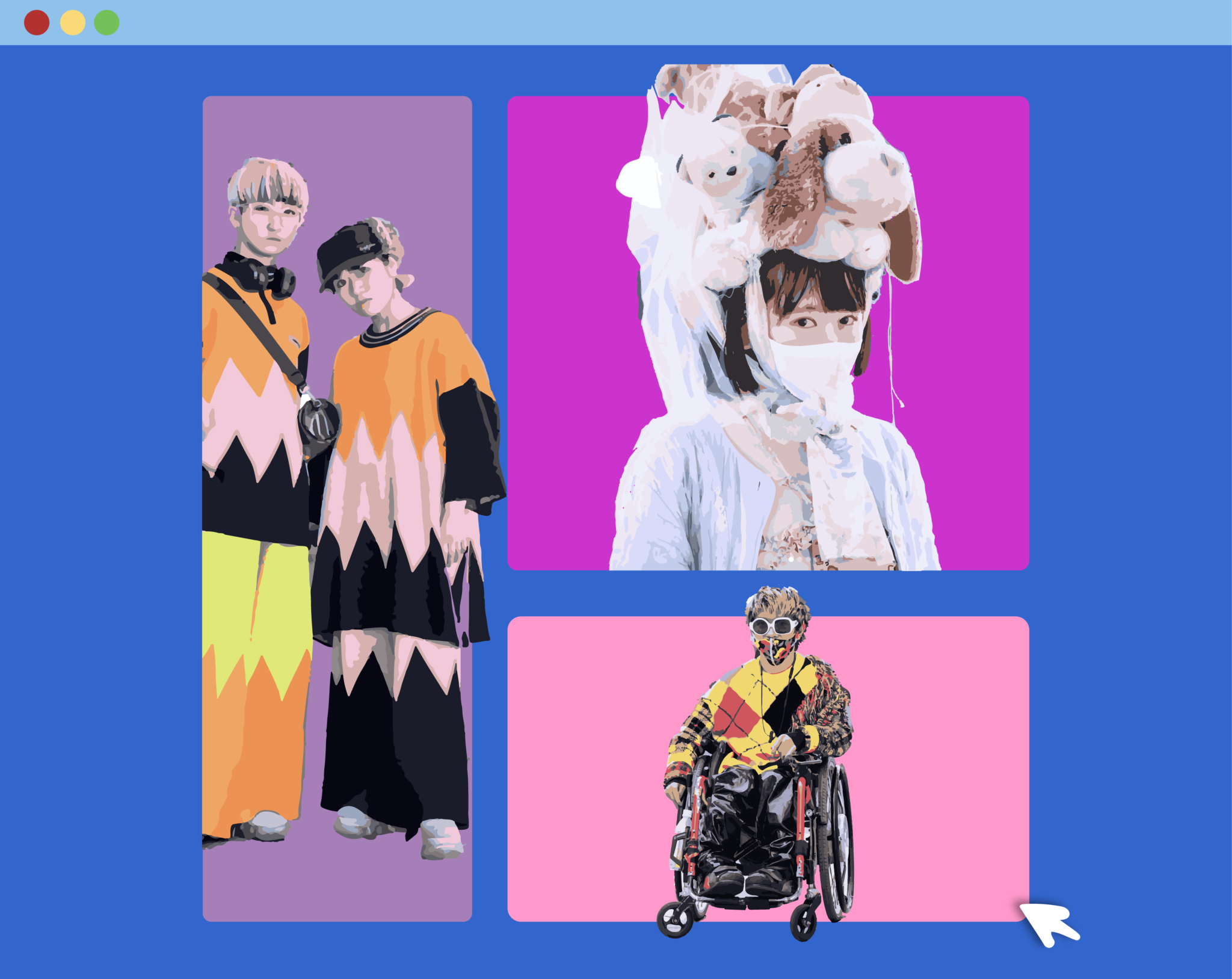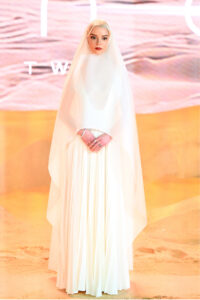GRAPHIC DESIGNER: Cindy Phung
COPY EDITOR: Madeline Liao
Over the years, Tokyo’s Harajuku has defined itself as the world’s stage for expressive and experimental street style. A tour of the district’s streets, past its colourful boutiques and lively eateries, is no less than a dream for fashion enthusiasts. Oversized, avant-garde, Lolita, gothic– it’s impossible to characterize Harajuku’s street style with one word. So, we’ve created a blueprint for understanding the phenomenon that is Harajuku street style; looking at both avant-garde and wearable interpretations of the overarching themes in Tokyo street fashion.
Handmade and Upcycled Clothing
Handmade and upcycled clothing remains part of the foundation of classic Tokyo street style. First immortalized in the Japanese street style magazine, FRUiTS, handmade clothing has defined Harajuku style for decades.
The idea is interpreted in countless different ways, each unique to the individual. Minori, a Japanese Shironuri artist, for example, has hand-crafted a dress made of recycled clear umbrellas. On the other hand, a Myanmar-born artist uses bedsheets from their childhood to create a shirt. Remade shredded denim skirts, hand-painted clothing and unique handmade accessories, all dot the streets of Harajuku, making for a combination of artistic expression and wearable clothing.
City Chic
Harajuku street style icons constantly bring their own unique twists on classic street style looks. Style icons continue to define Harajuku’s landscape with bold patterns, unusual colour combinations and accessories. While some wear relaxed band tees paired with vintage denim, others opt for sleek, minimalist looks. Layers seem to be a staple in Tokyo’s culture and so do statement pieces. Harajuku style is characterized by asymmetry, varying lengths and a focus on texture. From warm knits to faux fur to sheer skirts and bright pops of colour; each piece embodies the wearer and their personality.
Intertwining Culture
The streets of modern Harajuku are also woven with Japanese tradition and culture. Reimaginations of traditional clothing adorn Harajuku’s style icons– with interpretations spanning from gothic kimono dresses to dainty accessories paired with sleek western dresses.
Torii gate headpieces are paired with a purple kimono and a corset. Floral Japanese hakama pants tie together an outfit of colourful accessories and a fuzzy pink jacket. A necklace made from a vintage kimono is paired with a classic white dress. A black kimono is paired with a lace skirt and a corset. Each look defines Harajuku’s fashion landscape– intertwining the district with its culture, time, and place.
Subcultures and Style
Doll-like Lolita and alluring Visual Kei style icons walk the streets of Harajuku with shining eyes and a sense of belonging in their hearts. The youth of Harajuku use dress as a form of expression but it also creates a form of community for them. In interviews with author and sociologist Yuniya Kawamura, the youth of Harajuku noted: ‘I have made so many new friends that I would have never met if I did not belong to this subculture.’ Even though their distinct fashion may stand out, even ridiculed, they are still accepted by members of their community.
The characteristic silhouettes of these subcultures allow Japanese youth to form true friendships with other members of the community. Visual Kei, for instance, is a flamboyant style that draws inspiration from ‘80s Japanese pop-punk, creating an androgynous look that’s similar to western glam-rock. On the other hand, Lolita style is defined by a corseted silhouette. Subcultures form the very heart of Harajuku style and have been doing so since the ‘90s. The idea of subcultures is slowly dying down, but communities formed through them will live with people forever.
Designers worldwide have been taking inspiration from the diverse styles of Harajuku. Even Toronto had its very own “Harajuku Fashion Walk” before the pandemic, where people would dress up in styles reminiscent of Harajuku street style and walk through the streets of downtown. The secret to the eccentricity of Harajuku’s street style is individuality. Each look pulls from different styles seen around Harajuku. Unique pieces can sometimes be found in Toronto thrift stores and Japanese brands often have online stores to shop from. Some Japanese brands have repeatedly made appearances on the streets of Harajuku. These include: 6% DOKIDOKI, Punyus, and classic brands like Comme des Garcons, Vivienne Westwood and more. Toronto brands include Creeps, U3, Vintage Depot, and other vintage stores dotting Kensington.
A scroll through TokyoFashion’s archives might not be the same as walking down the vibrant Harajuku streets. But sometimes, it’s possible to see the wonders of the world through a camera lens.























